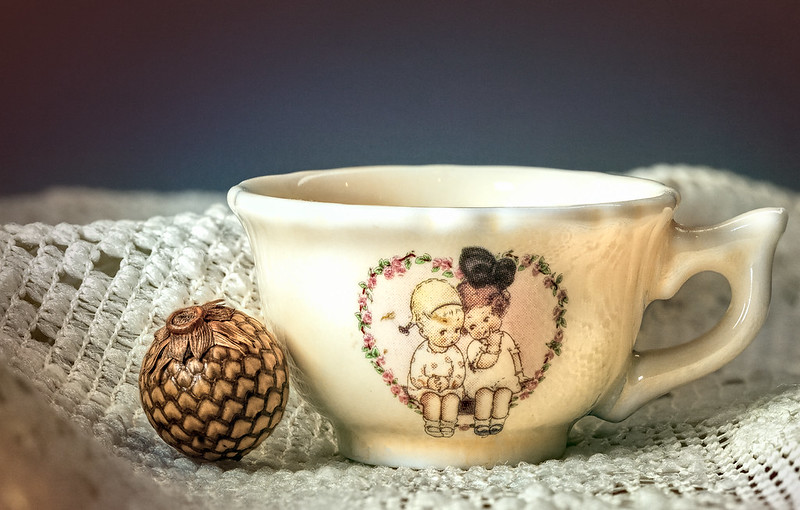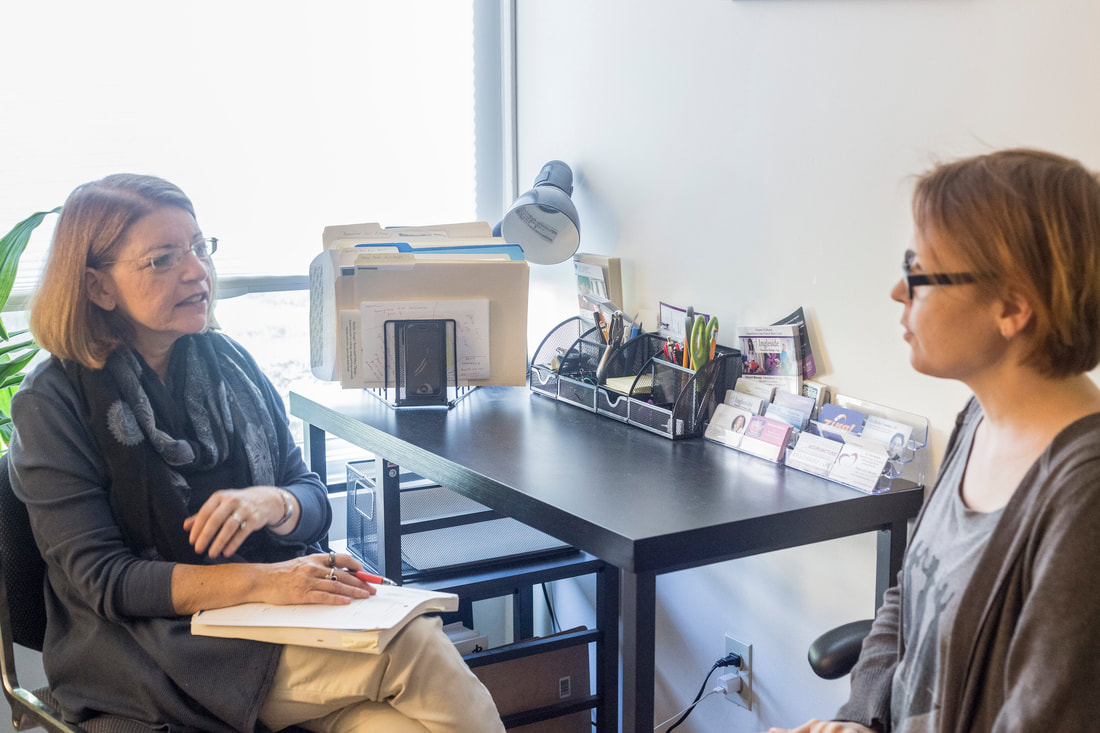|
Has cold and flu season been running rampant in your family? It seems like every day someone I know has come down with a bug. It happened to me a few weeks ago, giving me the opportunity to practice the kind of self-care I'm always talking about.
You see the body wants to heal. It's something each of us is doing all the time. We recover from cuts, scrapes, colds, broken bones, headaches, the flu all the time. And we don't always acknowledge it. So even if you're feeling crappy at the moment, most likely a week from now that feeling will just be a distant memory. But probably you want to do something to feel better today. I'm going to share with you my favorite at-home cold and flu remedies to help you and the ones you love to get healthy, naturally! 1) Rest You may think you're not doing anything when you're in bed resting from a bug. Nothing can be further from the truth—in fact, rest is perhaps the most important at-home cold and flu remedy! Your immune system is hard at work getting rid of germs that have invaded your bodies. Your cells are building energy. 2) Drink Tea Cold Season Tea is one of my favorite natural remedies for a cold. It contains herbs that warm the body and get rid of those pesky germs. As soon as I feel myself coming down with a cold, I start drinking cup after cup of this. I feel the bug moving out. It's kind of magical. Ginger lemon tea is another favorite of mine if you're feeling down and out with a cold or flu. Simply buy fresh ginger root at the supermarket. Wash it and cut it into thin slices. Then put them in the freezer. When you're ready for a cup of tea, put a few of the frozen slices in a cup, then add boiling water and some lemon juice. Also, add a little honey if you have a sore throat. 2) Use a Saline Rinse I do a nasal saline rinse every day, regardless of the season. I like the squeeze bottle by Neilmed. Fill it with distilled or boiling water (important) and a packet of saline. I microwave it for 22 seconds. The salt kills bacteria from infections in the nasal cavity. 3) Try Homeopathic Remedies. Homeopathic remedies are made by taking minuscule amounts of something that brings on symptoms in a healthy person, diluting these, and treating an illness in a person with similar symptoms. I like Oscillococcinum for colds and flus. You can purchase this at CVS or your local pharmacy. 4) Elderberry Syrup This works great for coughs and can be purchased at Vitacost. 5) Eucalyptus oil in a pot of boiling water Add a few drops of eucalyptus oil to a pot of boiling water and breathe in the steam. These natural cold and flu remedies are all easy to buy and prepare, and they are all good for the body. Pick 2 or 3 of your favorites, and you'll be feeling healthy in no time. Your immune system just needs a little TLC to get rid of and keep you from catching colds and flus.
2 Comments
About 80% of adults experience back pain at some point in their lives, and I've had a lot of experience treating it in the 20 years that I've been practicing acupuncture. I've always been curious about what contributes to the pain. Is it a pulled muscle or ligament, a weak immune system, osteoarthritis, a bulging disc, tight muscles or some combination of these? Read more about this. Over the past few years, I've been studying a manual therapy called Visceral Manipulation that offers an additional explanation for pain and restriction. Jean-Pierre Barral, a French Osteopath, teaches that restrictions in the connective tissue around and between the body's organs cause pain, particularly chronic pain that is difficult to treat. Releasing these restrictions can be done by first feeling the actual pull of tissue in the body, testing to see which organ is causing the primary restriction and then gently treating the organ to restore its natural rhythm. My work has always been based on releasing restrictions. Now in addition to feeling blockages in the acupuncture meridians, restrictions and pain in the muscles, bones and ligaments, I've been looking for restrictions in tissue around each organ. Also, I've been making sure each organ has its own intrinsic healthy rhythm. It's been an amazing journey for me and has enhanced the work that I do. It's another component of helping my patients can get lasting pain relief and a body that truly functions at an optimal level. We are approaching our national holiday of love. It's a whirlwind of buying flowers and chocolate. I happen to be a card person, and I'm having trouble resisting getting yet one more each time I walk into a store.
Lately I've been thinking about an aspect of love that often gets overlooked. This is self-care -- the act of putting time and attention to make sure that YOU are living a healthy and happy life. Self-care is one of the highest forms of love. It took a diagnosis of Chronic Fatigue Syndrome for me to wake up to the fact that I was not taking care of myself -- body or spirit. I was working long hours at a job that didn't fulfill me. I was in default mode, doing what I was told to do, not what I really wanted to do. The illness was my body speaking to me, saying that the life I was living wasn't right for me. Because I had limited energy, I had to make choices about what was most important. I had to slow down and listen. In this process, I discovered acupuncture and the idea of living a life in balance. I changed what I was eating, who my friends were and my profession. I got out of a relationship that wasn't right for me. But most of all I started a journey to become and stay healthy. The limited resources that I had went to doctor's visits, acupuncture treatments, psychotherapy and studying acupuncture -- one of the oldest and most widely used health modalities in the world. I learned about these five aspects of health that correspond to the Five Element/Five Organ system that is part of the practice of acupuncture.
Using these principles my life changed in ways that I could only imagine.
All these things were acts of self-care. They are things that I continue to practice to this day. Even when I get off course, when things get busy and life gets stressful, these are things that I return to time and time again. Out of this experience came a desire to help other people, possibly you, live healthier and happier lives. If this journey interests you, consider signing up for my Roadmap to Health 6 Week class. This is for you if:
This class begins on February 19th -- it's been postponed one week due to snow. For more information and to sign-up at a special rate, simply visit me at www.bonniediamond.com/roadmaptohealthspecial This Valentine's Day do something nice for yourself! 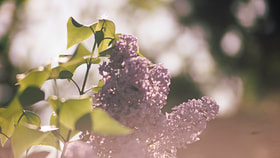 If you’re part of the over 60% of people who make New Years resolutions with good intentions but are unable to keep them, this newsletter is for you. You mean well, you try hard, but life gets in the way. Think of a resolution as a seed that gets planted. We have an idea. We want to make a change in our life. We’re excited. We set goals, make promises, tell ourselves this year we’ll eat our vegetables, exercise more, be kinder. We truly mean these things. Yet for many of us by April we’re back to our same old habits. What has happened? I think that we have forgotten to nurture the seed. No one expects a seed to grow without water and sun. And no one expects the seed we plant today to turn into a full grown tree tomorrow. Growth and change take time. When you make a resolution, ask yourself these questions:
Take time to answer these questions. It may require many hours. Pay attention to how easy or difficult this process is. Write your answers down. If you’re not able to do this, you might want to pick a new year’s resolution that is easier to implement. With nurturing and care and love our dreams will take form. Do get in touch with me if you need help in this process. Wishing you a healthy, happy and prosperous New Year! Bonnie "With time and patience the mulberry leaf becomes a silk gown" ~Chinese Proverb 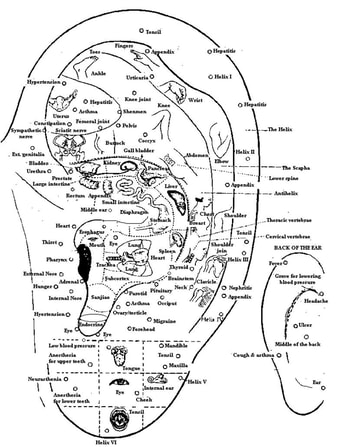 Ear acupuncture is a little different from full body acupuncture in that the ear is considered a microsystem of the body. Although some ear points were mentioned in Chinese texts as far back as 500 BC, auriculotherapy as we know it today was developed by Dr. Paul Nogier, a French physician, in 1957. Dr. Nogier noticed a scar on the upper ear of some of his patients. He found that all of them had been treated for sciatica pain by a local lay practitioner. This woman had cauterized a specific area of the external ear in order to relieve their low back pain. Dr. Nogier conducted a similar procedure on his own sciatica patients and found that their back pain was also reduced. He then tried other means of stimulating this "sciatica point," including the use of acupuncture needles, and found that they too were effective in alleviating sciatica pain. Dr. Nogier theorized that if an area of the upper external ear is effective in treating low back pain, maybe other parts of the ear could treat other parts of the body. Nogier theorized that the ear represents an inverted fetus and points in the ear correspond to parts of the body. Points for hands and feet can be found at the top of the ear, while the face is represented on the bottom of the ear. What’s interesting is that a similar map of the body, called the homunculus, exists in neurons on the cerebral cortex (outermost sheet of neural tissues in cerebrum and some vertebrae), in the thalamus and in the brain stem. This model was first presented to naturopathic practitioners in France in 1957, then spread to acupuncturists in Germany, and finally was translated into Chinese around 1958. During 1958 a large study on the effectiveness of this acupuncture technique was conducted by the Nanking Army Ear Acupuncture Research Team using over 2,000 patients. Dr. Nogier's theory of an inverted fetus was accepted as clinically accurate, and during the cultural revolution so called 'barefoot doctors' were trained in the simple techniques of ear acupuncture In 1990, the World National Organization conducted an international meeting and standardized auricular anatomical names for the points that had been used in Chinese and French auricular acupuncture for many years. By 1995, the World Health Organization, in tandem with the Chinese Government, defined the location of 91 specific ear acupuncture points. Nogier acknowledged that Chinese traditional medicine had been using ear points for acupuncture prior to his discovery, but these had been considered empirical points for particular treatments and were not associated with representation of the homunculus in the ear. This new discovery allowed for greater treatment possibilities. In the US, Terry Oleson who has a PhD in pychobiology published a paper on his research findings. He had 40 patients examined to find areas of their body with musculoskeletal pain. The patients were draped and doctors examined the patients' ears for elevated skin conductivity or tenderness with no knowledge of their medical conditions. The correspondence between the medical diagnosis and the auricular diagnoses was 75.2%. In addition, MRIs show that there is a correspondence between points in the ear, sections of the brain, and areas of the body. Ear acupuncture is a type of treatment that has not only been verified by science, but also leads to clinical success when used to the patients in my office. It works particularly well for pain, addiction and stress! 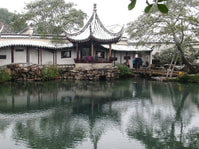 Chinese medicine dates back over three thousand years. The oldest book on Chinese medical theory, The Nei Jing, was written between 300 and 100 BC. It describes the theory and application of yin and yang and the five organ, element system. It teaches the causes of disease, explains how to diagnose illness, and tells how energy flows through the body. It still serves as the theoretical basis of acupuncture which today is one of the most widely used forms of medicine in the world. Although acupuncture is ancient, it has only been practiced in this country for about 50 years. In 1972, a New York Times reporter, James Reston, accompanied Henry Kissinger to China. While there he had emergency appendectomy surgery and was so impressed by the post-surgery acupuncture he received, he wrote about his experience. This created interest in the modality in the US. In 1974, the first acupuncture school in this country, the New England School of the Acupuncture (NESA), was opened. I studied there, graduating and receiving my license in 1998. Most folks don’t know this, but there are several different styles of acupuncture. These styles that evolved as Chinese medicine spread to different countries. Acupuncture arrived in Japan in 562 AD. Schools were established during the 8th century. Acupuncture was considered an appropriate vocation for the blind, and as a result, acupuncturists in Japan developed extremely sensitive kinesthetic skills. They learned to get information by feeling the pulse and palpating the abdomen. In Japan, acupuncturists apprenticed with masters and learned by observing their work. At NESA, after the first year of training, students have to choose to study between a Chinese or Japanese acupuncture track. I chose Japanese and began studying the style of a well-known acupuncturist from Japan, Kiiko Matsumoto. Kiiko, to this day, studies with the masters in Japan and brings their teachings to the US, carrying on a several thousand year old tradition. I continue to study with her and feel honored to be a part of this ancient way of healing.  I traveled to New Orleans a few weeks ago. I knew I had truly arrived when our Lyft driver said "How ya doing, Miss Bonnie?" I had made a lunch reservation and when we arrived I was greeted with "Welcome, Miss Bonnie." On a shuttle bus to Mardi Gras World the driver asked if this was my first time in New Orleans. When I said it was my second, he replied "Welcome Home." New Orleans is a great place to travel to. The food, music, warm weather, welcoming people make it so special. Being there feels like getting a big hug. But I want to tap into something deeper. The importance of social connection. Not just because it makes us feel good -- although this is important. But because it makes us healthier. Here's what the experts have to say:
Here is "Miss Bonnie's" take on all this:
One of the reasons that I love Eastern Medicine is because of its emphasis on connection. In the 5 element/5 organ system that we use no one organ/element exists on its own. The energy of the liver feeds the heart, the heart energy feeds the spleen, the spleen energy feeds the lungs, the lung energy feeds the kidneys, the kidney energy feeds the liver. The cycle is completed and begins again. As people we may feel isolated, but we never exist in true isolation. With you in spirit… Bonnie Sources: www.nytimes.com/2017/12/11/well/mind/how-loneliness-affects-our-health.html https://well.blogs.nytimes.com/2013/05/13/shaking-off-loneliness/ www.apa.org/news/press/releases/2017/08/lonely-die.aspx www.nytimes.com/2016/12/22/upshot/how-social-isolation-is-killing-us.html 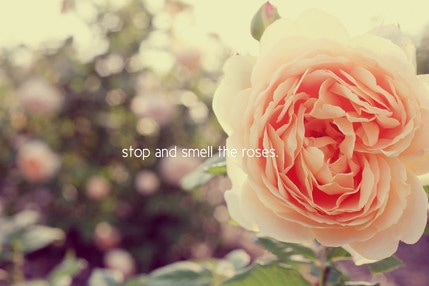 Do you feel like you’re on go all the time? Do you feel the pressure of work, family and social obligations? We live in over-scheduled times. We have busy calendars and long to-do lists. You may be doing more and it may feel good for a little while. But take a moment to ask yourself if you are leading a truly meaningful and productive life. From an Eastern perspective our culture focuses on the Yang side of life. Yang energy corresponds to activity, light, heat and daytime. It’s opposite, yin, corresponds to rest, darkness, sleep, cold, and nighttime. These two types of energy are found in the autonomic nervous system (ANS), the system that operates mostly unconsciously and regulates many body functions such as heartbeat, respiration and digestion. The ANS consists of the sympathetic nervous system and the parasympathetic nervous system. The Sympathetic Nervous System (your Yang energy) prepares your body for action when it senses danger by pumping adrenaline into your blood stream. During this “fight or flight” response, the following occurs:
The Parasympathetic Nervous System (your Yin energy) serves as a brake to this revved up energy. This “rest and digest” response slows things down in these ways:
Both the sympathetic and parasympathetic systems are important. They are needed to balance one another as they perform opposite but necessary functions. However, we live in a stressful culture. Each stressor activates the sympathetic nervous system keeping our bodies in sympathetic overdrive. For many of us there is too much go, go, go and not enough rest. Acupuncture treatments regulate the autonomic nervous system by releasing neurotransmitters and hormones, or in Eastern terms, balancing yin and yang. I find that patients go into a deeply relaxed state and report sleeping better after treatments. Over time pain decreases, digestion improves, anxiety is diminished. This leads to improved health, relationships and life choices. "One of the great things about a treatment with Bonnie is afterwards I feel very focused, clear and centered. Each treatment also has a calming effect and allows me to sleep better." Pat P. - Sunderland 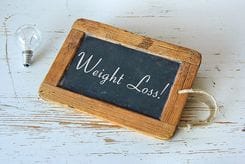 Acupuncture and Weight Loss Acupuncture and Weight Loss Nutrition is a part of the tradition of acupuncture. A balanced diet is considered essential to good health. Eastern nutrition focuses on the energetic qualities of food. Certain foods (like dairy products) cause cold and dampness in the body – both of which weaken the digestive system. Certain foods (like ginger) are warming and help strengthen digestion. When I work with patients around nutrition and weight loss, my approach is fivefold:
I’ll share a weight-loss secret that has helped me take and keep off those few extra pounds. Eating well and obtaining and maintaining your ideal weight is within your reach. The wisdom of acupuncture can give you the tools that you need to love and nourish your body for life. 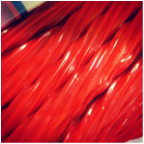 Halloween candy reminds me of a theory that I have been pondering over the last few months. I call it the "Twizzler effect:" It goes back to the Twizzler licorice that I ate as a kid -- those strands of licorice twisted around each other. In my mind, they represent two aspects of any situation. One strand represents the aspects of life that you cannot change. If it's raining outside, you can't stop the rain. But, there is also another factor – your relationship to the first aspect. This is the second strand. You can’t stop the rain, but you can open an umbrella and stay dry. You can appreciate that the rain helps to grow the fruits and vegetables that you eat. You can jump in puddles or curl up with a good book. You can look for rainbows. The Twizzler effect applies to your health. You are aging. At some point in your life, you are bound to feel the effects of illness and disease. (I say this so you don’t feel bad or blame yourself when this happens.) But, this is only the first strand. It’s not the whole picture. There is hope. Hope exists in the second strand, the things that you do to care for yourself. This includes the foods you fill your body with, the thoughts you fill your mind with, the people you surround yourself with and the healers you go to. It’s this second strand that you have control over. By focusing your energy on the things you can change, you can create a space of health and well-being. You can find deep acceptance of who you are AND make conscious shifts to become the person you want to be. |
AuthorIn practice for over 20 years, Bonnie Diamond offers individualized, heart-centered care using a pain-free, Japanese style of acupuncture. Her work is influenced by her nine year struggle with and complete recovery from Chronic Fatigue Syndrome. Archives
April 2024
Categories
All
|
Convenient Easthampton, MA Location
|
Hours are Tuesday-Thursday, 10am-8pm
|
247 Northampton Street, #27 Easthampton, MA 01027 781-718-6325 Get directions Get information on other complementary health resources recommended by Staying in Balance. Pioneer Valley Community Resources |
Copyright 2000-2022 All rights reserved.
